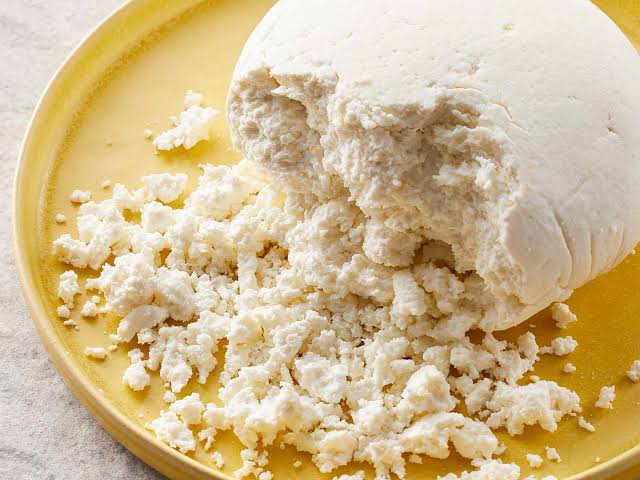Processing Local Milk into Cheese: Soft and Fresh Variants
Introduction
Cheese-making has a long tradition across cultures, yet in Nigeria and other parts of Africa, it has not been fully industrialized despite the abundance of local milk from cattle, goats, and sheep. Transforming this local milk into cheese provides opportunities for nutritional enhancement, food diversification, and income generation for smallholder farmers and entrepreneurs. Among the most accessible and practical options are soft and fresh cheeses—varieties that require minimal aging, simple equipment, and are well-suited to local contexts.
This article explores how local milk can be processed into soft and fresh cheese, the benefits of doing so, and practical considerations for small-scale producers.
- Why Cheese from Local Milk Matters
Nutritional Value: Cheese is rich in protein, calcium, vitamins A and B12, and beneficial fats, offering a concentrated form of milk nutrition.
Food Security: Cheese-making extends the shelf-life of milk, which is otherwise highly perishable.
Economic Empowerment: Value addition creates new markets and income streams for pastoralists, women’s cooperatives, and dairy startups.
Cultural Adaptation: Locally processed cheese (e.g., the popular wara in Nigeria) fits well into local diets and cuisines.
- Characteristics of Soft and Fresh Cheeses
Soft and fresh cheeses are:
Moist and Creamy: With high water content and mild flavor.
Quick to Produce: Usually ready within hours or a few days, unlike aged cheeses.
Locally Adaptable: Can be made without sophisticated equipment or aging rooms.
Examples: Cottage cheese, ricotta, mozzarella, cream cheese, paneer, and Nigerian wara.
- Step-by-Step Process of Making Soft and Fresh Cheese from Local Milk
a. Milk Selection and Preparation
Use fresh, clean, high-quality milk from cows, goats, or sheep.
Filter milk to remove debris and heat gently (pasteurization at ~72°C for 15 seconds) to kill harmful bacteria while preserving nutrients.
b. Coagulation
Add a coagulant to separate milk solids (curds) from the liquid (whey). Options include:
Rennet (commercial or plant-based, e.g., from fig or papaya sap).
Acidic substances like lemon juice, vinegar, or lactic acid bacteria cultures.
c. Curd Cutting and Heating
Once curd forms, cut it into small cubes to release whey.
Heat gently (40–50°C) to firm the curds, depending on the cheese type.
d. Draining the Whey
Strain the curds using a muslin cloth or perforated container.
For softer variants, reduce draining time to retain more moisture.
e. Salting and Flavoring
Add salt to enhance taste, extend shelf life, and improve texture.
Optional herbs or spices (garlic, pepper, thyme) can create unique local flavors.
f. Molding and Storage
Shape cheese into small blocks or balls.
Store in cool conditions or immerse in brine for preservation.
Soft cheeses are usually consumed within 1–7 days.
- Examples of Fresh Cheese Variants from Local Milk
- Wara (Nigerian Soft Cheese)
Made by curdling cow’s milk with thistle leaves or lemon juice.
Typically sold fresh, boiled, or fried.
Common in Yoruba cuisine as a protein-rich snack.
- Paneer (South Asian Fresh Cheese, adaptable locally)
Coagulated with lemon juice or vinegar.
Firm, mild, and versatile for cooking in stews or frying.
- Ricotta-Style Cheese
Made from heating whey left after other cheese-making.
Creamy texture, ideal for spreads, pastries, or desserts.
- Mozzarella (Simplified Fresh Variant)
Requires stretching curds in hot water.
Suitable for local pizza, pastries, or grilled dishes.
- Benefits of Producing Soft and Fresh Cheese Locally
Low Investment: Requires basic utensils—pots, muslin cloths, and clean containers.
Quick Returns: Can be processed and sold within a day, reducing spoilage losses.
Customization: Easy to add local spices, herbs, or traditional flavors.
Market Expansion: High demand in urban centers, restaurants, and bakeries for affordable cheese alternatives.
- Challenges and Considerations
Milk Quality Control: Contaminated milk can spoil cheese or pose health risks.
Hygiene and Food Safety: Proper handling and pasteurization are essential.
Shelf-Life Limitation: Fresh cheeses spoil quickly without refrigeration.
Consumer Awareness: Educating customers about cheese varieties and uses is important to expand markets.
- Opportunities for Scale-Up in Nigeria
Women’s Cooperatives: Training women groups to produce wara or paneer-style cheese for local sales.
Agro-processing Startups: Small dairy enterprises can package soft cheeses for supermarkets.
Culinary Innovation: Infusing indigenous flavors—like suya spice or moringa—into cheese.
Export Potential: With proper safety standards, soft cheeses can target African diaspora markets craving traditional products.
Conclusion
Processing local milk into soft and fresh cheese is a practical and profitable way to add value to Nigeria’s dairy sector. With simple techniques, farmers and entrepreneurs can transform perishable milk into versatile, nutrient-rich foods that serve both traditional and modern tastes. By investing in hygiene, consumer education, and small-scale processing innovations, Nigeria can strengthen its food security, rural incomes, and culinary heritage through cheese-making.

